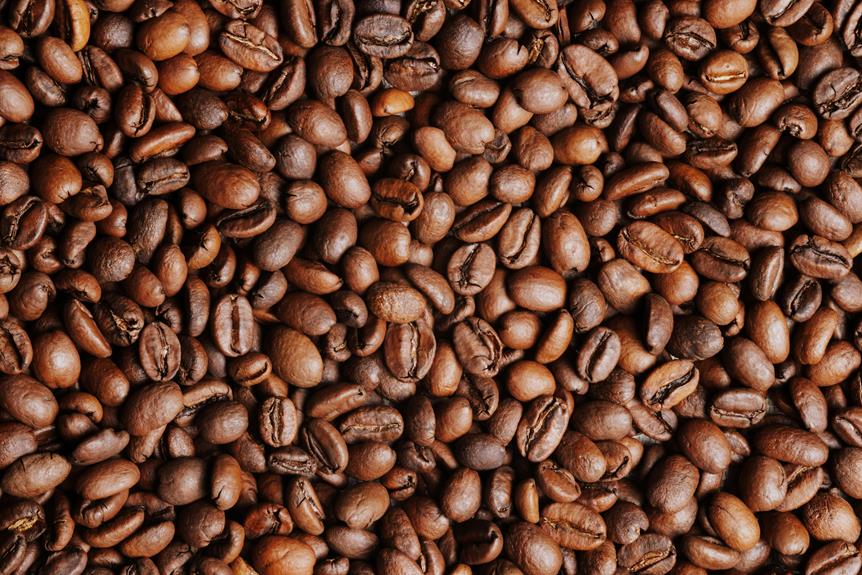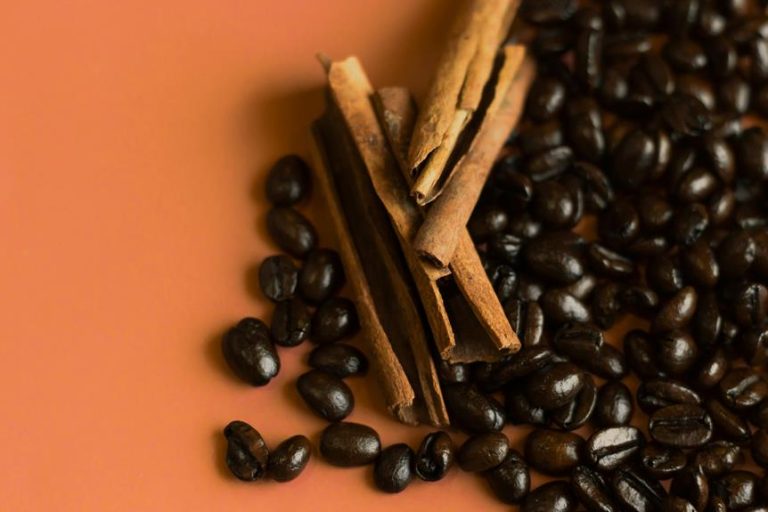Espresso Beans Vs Coffee Beans: Understanding the Difference

When we explore the world of coffee, we often hear about espresso beans and coffee beans, yet many of us may not fully grasp their differences. While both come from the same coffee plant, their roasting profiles and brewing methods set them apart considerably. This distinction not only affects flavor but also influences our overall coffee experience. So, what exactly should we consider when choosing between them? Understanding these nuances can enhance our appreciation of coffee in ways we might not expect. Let's uncover the key factors that differentiate these two types of beans.
Coffee Plant Origins
When we explore the origins of the coffee plant, we find ourselves delving into a rich tapestry of history that spans continents and cultures.
The arabica varieties, known for their complex flavors, trace back to Ethiopia, while robusta characteristics, with their boldness and higher caffeine content, originate from Africa as well.
Understanding these roots helps us appreciate the diverse world of coffee today.
Processing Methods
When it comes to processing methods, we see two primary techniques: dry and wet processing.
Each method greatly influences the flavor and aroma of the beans, shaping the final cup we enjoy.
Let's explore how these processes work and what makes them unique.
Dry Processing Method
The sun-drenched coffee cherries are a key element in the dry processing method, a technique that's both ancient and effective.
We allow the cherries to ferment in the sun, promoting dry fermentation. This method enhances the coffee's natural sugars, resulting in complex flavor profiles.
Wet Processing Method
In contrast to dry processing, the wet processing method offers a distinct approach to coffee bean preparation that emphasizes cleanliness and clarity in flavor.
This technique enhances coffee fermentation, allowing for better flavor development.
Here's what we should consider:
- The removal of the cherry's pulp.
- The fermentation process.
- The meticulous washing of beans.
Together, these steps lead to bright, vibrant brews.
Roasting Profiles
Roasting profiles play an essential role in defining the flavor and aroma of both espresso and coffee beans.
By adjusting the roasting temperature, we influence the chemical reactions that lead to flavor development.
Lighter roasts tend to highlight acidity and fruity notes, while darker roasts bring out deeper, chocolatey flavors.
Understanding these profiles helps us appreciate the unique characteristics of each bean type.
Brewing Techniques
When it comes to brewing, the methods we choose greatly influence the flavor and strength of our coffee.
We'll explore how different extraction techniques and grind sizes can alter the final cup, and why these factors matter for both espresso and regular coffee.
Understanding these elements helps us craft the perfect brew tailored to our taste preferences.
Extraction Methods
Numerous extraction methods can greatly influence the flavor profile and overall experience of our coffee.
Key factors like extraction temperature and extraction time play vital roles.
Here are three popular methods we can explore:
- Espresso: High pressure and short extraction time yield a bold flavor.
- French Press: Longer extraction time enhances richness.
- Pour Over: Controlled extraction temperature allows for nuanced flavors.
Grind Size Impact
The method we choose to extract our coffee's flavors is only part of the equation; the grind size of the beans also plays a significant role in the final brew.
Achieving grind consistency guarantees an even extraction, which affects the brewing temperature and overall taste. A finer grind increases surface area, leading to faster extraction, while a coarser grind slows it down, impacting flavor profiles.
Flavor Characteristics
Espresso and coffee beans each offer distinct flavor profiles that can dramatically influence our coffee experience.
By exploring their taste profiles and aroma nuances, we can appreciate the differences more clearly:
- Espresso Beans: Often richer, with bold, concentrated flavors.
- Coffee Beans: Typically milder, showcasing a wider range of subtle tastes.
- Aroma: Espresso tends to have a stronger, more intense aroma compared to the diverse scents of brewed coffee.
Caffeine Content
When we compare caffeine content, it's essential to recognize that both espresso and coffee beans pack a punch, but they do so in different ways.
Espresso contains more caffeine per ounce, leading to quicker caffeine absorption in our systems.
However, individual caffeine sensitivity varies, meaning some of us might feel the effects of a single shot more intensely than others.
Common Misconceptions
Many people often hold misconceptions about espresso and coffee beans that can lead to confusion.
Let's dispel some common espresso myths and coffee stereotypes:
- Espresso is just a stronger coffee.
- All coffee beans can be used for espresso.
- Espresso contains more caffeine than regular coffee.
Choosing Your Beans
Choosing the right beans can greatly impact our coffee experience, as the flavor profiles, acidity levels, and roast types each play an essential role in what we ultimately brew.
Conclusion
To sum up, understanding the distinctions between espresso beans and coffee beans empowers us to make informed choices based on our brewing preferences. By considering factors like roast profiles, processing methods, and flavor characteristics, we can enhance our coffee experience. Whether we crave the rich intensity of espresso or the diverse flavors of brewed coffee, knowing the differences allows us to savor each cup to its fullest. Let's explore and enjoy the fascinating world of coffee together!






